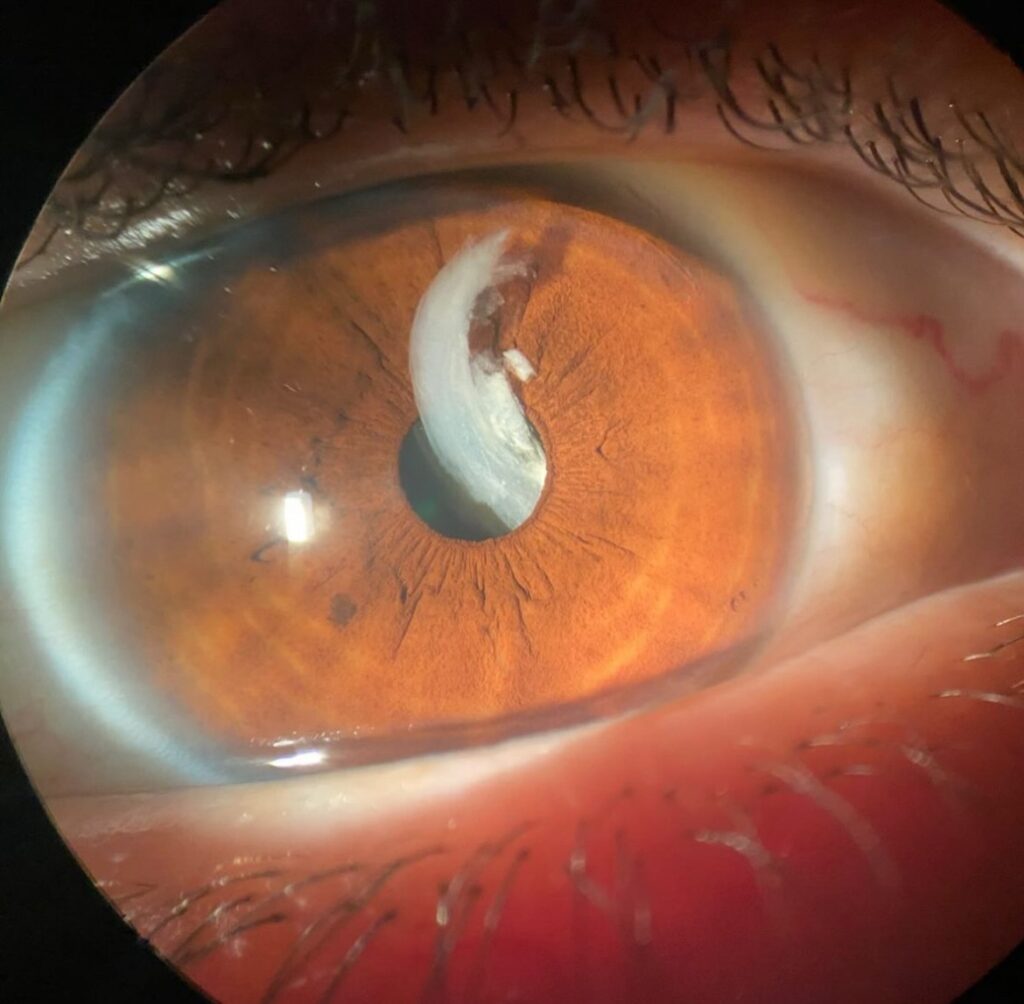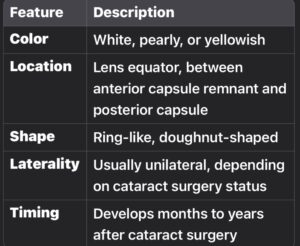Soemmering’s Ring
Soemmering’s ring is a ring-shaped accumulation of retained lens epithelial cells and cortical material that forms between the posterior capsule and the edge of the anterior capsule remnant following extracapsular cataract extraction (ECCE) or phacoemulsification. It is a benign, age-related or post-surgical finding, often observed years after cataract surgery.
While it is usually asymptomatic, in some cases, it can enlarge or dislocate, leading to visual disturbances or other complications.
2. Historical Background
Named after the German anatomist Samuel Thomas von Soemmerring, who first described this ring-like opacity in 1799, Soemmering’s ring was initially observed in autopsy eyes after couching procedures.
3. Pathophysiology

After ECCE or phacoemulsification, a rim of the anterior capsule is intentionally left in place. Equatorial lens epithelial cells survive between the anterior and posterior capsule. These proliferate and migrate, forming new cortical fibers that become compressed and arranged in a circular fashion in the lens equator. Over time, this results in a white, doughnut-shaped opacity, typically seen in the periphery of the capsular bag.
4. Clinical Appearance
Appears as a dense, peripheral, white ring within the capsular bag. Typically located circumferentially at the equator of the lens capsule. Seen best with retroillumination during slit-lamp examination or under dilated pupil.
5. Features

Symptoms and Clinical Significance
Asymptomatic in most cases. May be confused with posterior capsule opacification (PCO), but Soemmering’s ring lies peripherally and does not interfere with the visual axis. Complications (rare): Capsular bag distension In-the-bag intraocular lens (IOL) decentration Ring dislocation into the anterior chamber or vitreous Secondary glaucoma if ring material causes angle obstruction
7. Diagnosis
Slit-lamp examination under dilation is often sufficient. Retroillumination or optical coherence tomography (OCT) can confirm the ring’s location. Important to differentiate it from other causes of decreased vision post-cataract surgery.
8. Management
Observation: Most cases require no intervention. Nd:YAG capsulotomy is not effective for Soemmering’s ring as it lies in the periphery and outside the visual axis. Surgical removal: Indicated only if complications occur, such as IOL dislocation or ring dislocation into the anterior chamber. Monitoring: Regular follow-up if the patient presents with symptoms or other post-cataract issues.
9. Prognosis
Excellent in most cases. The ring remains stable and does not affect vision unless associated with other pathology. Surgical intervention is rarely required.
Discover more from An Eye Care Blog
Subscribe to get the latest posts sent to your email.


You must be logged in to post a comment.